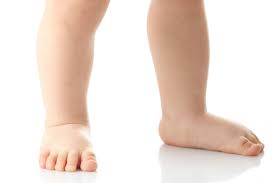 Flat foot is a condition where the longitudinal arch or instep of the foot collapses and comes in contact with the ground. In infants and toddlers, the longitudinal arch is not developed and flat feet are normal. In some cases, the longitudinal arch never develops resulting in the development of flat foot in children. Most children with flat feet do not cause pain or other problems. Flat feet may be associated with pronation, a leaning inward of the ankle bones toward the center line.
Flat foot is a condition where the longitudinal arch or instep of the foot collapses and comes in contact with the ground. In infants and toddlers, the longitudinal arch is not developed and flat feet are normal. In some cases, the longitudinal arch never develops resulting in the development of flat foot in children. Most children with flat feet do not cause pain or other problems. Flat feet may be associated with pronation, a leaning inward of the ankle bones toward the center line.
Symptoms of a Flat Foot
Some common symptoms of a flat foot and their subsequent problems include:
A flat look to one or both of your feet
Uneven shoe wear and collapse of your shoe toward the inside of your flat foot
Lower leg pain
Pain on the inside of your ankle
Swelling along the inside of your ankle
Flat foot pain
Running is a problem in case of flat feet
Causes of Flat Feet
Painful flat feet in children may be caused by a condition called tarsal coalition. Tarsal coalition is a condition where two or more of the bones in the foot fuse together, limiting motion and often leading to a flat foot.
Flat feet can also be caused by fallen arches. Years of wear and tear can weaken the tendon that is responsible for shaping the arch. Fallen arches can also be caused by injury such as inflammation of the tendons in the foot.
Treatment for Flat Foot
A painless flatfoot that does not hinder your ability to walk or wear shoes requires no special treatment or orthotic device. Other flat foot treatment options depend on the cause and progression of the flatfoot.
Conservative treatment options include:
Making shoe modifications
Using orthotic devices such as arch supports and custom-made orthoses
Taking nonsteroidal anti-inflammatory drugs such as ibuprofen to relieve pain
Using a short-leg walking cast or wearing a brace
Injecting a corticosteroid into the joint to relieve pain
Rest and ice
Physical therapy
Flat foot exercises as instructed by the surgeon
In some cases, flat foot operation may be needed to correct the problem. Surgical procedures can help reduce pain and improve bone alignment.
